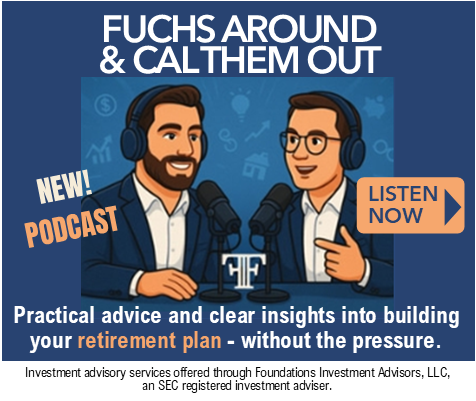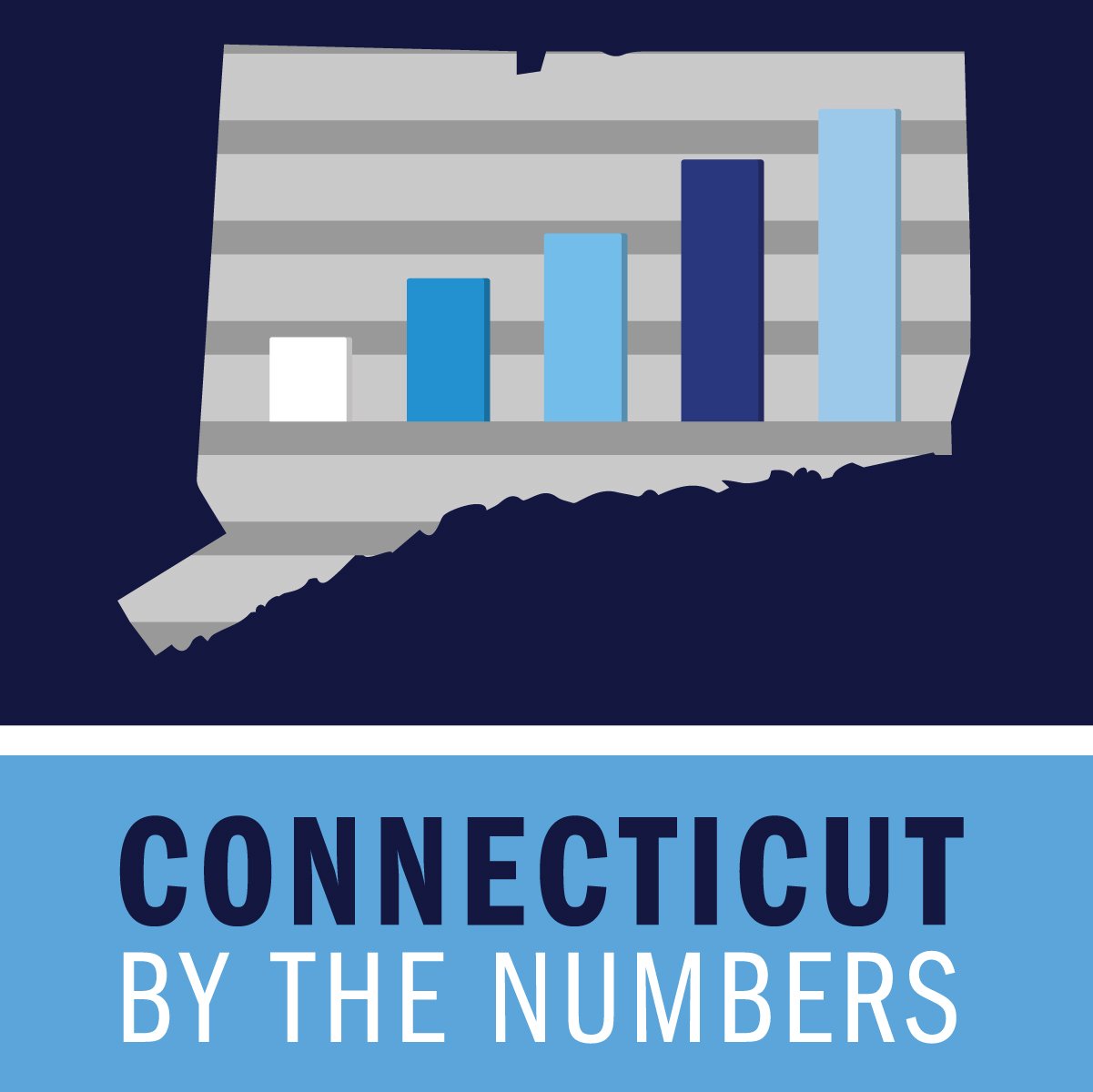CT Pilot Program Testing Fully Autonomous Vehicles Begins Accepting Municipal Applications
/Driverless cars may be coming to a Connecticut town near you. The state Office of Policy and Management, pursuant to Public Act 17-69, has begun accepting applications from municipalities to participate in a Fully Autonomous Vehicle Testing Pilot Program (FAVTPP). The state agency can select up to four municipalities to participate in the pilot program.
 The purpose of the pilot program, according to OPM, is to encourage and allow for the testing of fully autonomous vehicles (FAV) on local highways in Connecticut. The goal for the pilot program is to allow a variety of FAV testing to occur in four municipalities throughout the state, bringing Connecticut to the forefront of the innovative and burgeoning autonomous vehicle industry.
The purpose of the pilot program, according to OPM, is to encourage and allow for the testing of fully autonomous vehicles (FAV) on local highways in Connecticut. The goal for the pilot program is to allow a variety of FAV testing to occur in four municipalities throughout the state, bringing Connecticut to the forefront of the innovative and burgeoning autonomous vehicle industry.
Thus far, state and local officials indicate that two municipal application have been filed, from Stamford and Windsor Locks, three additional communities have expressed interest (Bridgeport, Manchester, and New Haven) and at least one additional application is anticipated. A handful of other communities have expressed some degree of interest, but are uncertain if they will be applying to participate in the pilot program. OPM expects to begin its review process of the filed applications shortly.
In order to apply, interested municipalities must complete and submit the formal application now on the agency’s website, along with a copy of the City/Town Council’s resolution approving the application.The law stipulates that OPM consult with the Department of Motor Vehicles (DMV), Department of Transportation (DOT), Department of Emergency Services and Public Protection (DESPP) and the Connecticut Insurance Department (CID).
Connecticut municipalities provide a wide range of challenges and opportunities for testing the limits of FAV technologies and services, according to the program description. Examples cited include operation in communities with varying climate and weather conditions, urban and rural geographies, access or lack thereof to adequate transportation and/or workforce opportunities, new and aging infrastructure, varying levels of traffic volumes and congestion and users of multiple modes of transportation including car, pedestrian, bicycle, bus, rail, freight, etc.
Prior to completing an application, interested municipalities are encouraged to search for and partner with interested autonomous vehicle testers. The application must include “Specific Location(s) and Route Where FAV Testing is Expected to Occur.” Municipalities are asked to attach a map “with the anticipated location(s) and route highlighted” and to “identify all public roads, all private roads, and any important entities or buildings (i.e. critical infrastructure, schools, hospitals, fire stations, etc.) within/near the testing area.”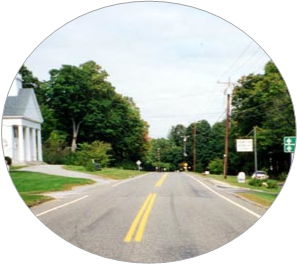
OPM also is asking the applying municipalities to describe what it hopes to achieve by participating in the pilot program, why specific locations were selected, and “the municipality’s ability to safely oversee fully autonomous vehicle testing.”
The program requirements include that while operating a FAV, the autonomous vehicle operator shall at all times:
- Obey all traffic laws, provisions of the general statutes and ordinances of the applicable municipality concerning the operation of motor vehicles.
- Be seated in the driver's seat of the FAV.
- Be monitoring the operation of the FAV.
- Be capable of taking immediate manual control of the FAV.
In addition, municipalities are required to conduct a public outreach campaign to notify local officials, first responders, the general public and local media outlets about their participation in the FAVTPP prior to testing. At a minimum, as part of the public outreach campaign, the municipality must outline an education program for police and residents regarding FAVs and the municipality’s participation in the FAVTPP; and share the finalized specifications on where and when such FAV(s) will be tested within the municipality as part of the FAVTPP.
The posting of electronic or printed signs at various testing area entry and exit points may be required by the municipality to inform the public and emergency responders when and where testing of FAVs is taking place. The signage must be approved by the municipality’s Traffic Authority, and that with respect to State highways and bridges and State railroad rights-of-way, the planned signage must be approved by the state DOT.
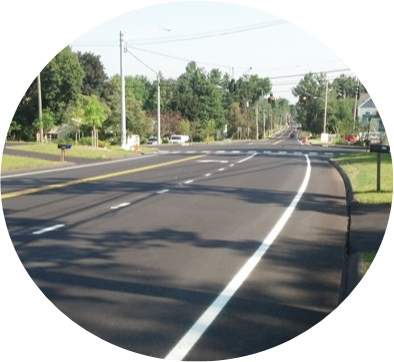 The state law outlines a framework of the minimum requirements to be included in agreements between municipalities and autonomous vehicle testers approved for participating in the Fully Autonomous Vehicle Testing Pilot Program (FAVTPP). The Connecticut law, according to the National Conference of State Legislatures (NCSL), specifies the requirements for testing, including having an operator seated in the driver’s seat and providing proof of insurance of at least $5 million. It also establishes a task force to study fully autonomous vehicles. The study must include an evaluation of NHTSA’s standards regarding state responsibility for regulating FAVs, an evaluation of laws, legislation and regulations in other states, recommendations on how Connecticut should legislate and regulate AVs, and an evaluation of the pilot program.
The state law outlines a framework of the minimum requirements to be included in agreements between municipalities and autonomous vehicle testers approved for participating in the Fully Autonomous Vehicle Testing Pilot Program (FAVTPP). The Connecticut law, according to the National Conference of State Legislatures (NCSL), specifies the requirements for testing, including having an operator seated in the driver’s seat and providing proof of insurance of at least $5 million. It also establishes a task force to study fully autonomous vehicles. The study must include an evaluation of NHTSA’s standards regarding state responsibility for regulating FAVs, an evaluation of laws, legislation and regulations in other states, recommendations on how Connecticut should legislate and regulate AVs, and an evaluation of the pilot program.
In the event that a FAV experiences a crash during the FAVTPP in which a death, physical injury or property damage occurs the autonomous vehicle tester and applicable municipality must comply with specific notification and investigation procedures outlined by OPM. A recent testing death in Arizona continues to receive scrutiny.
According to NCSL, 29 states including Connecticut have enacted legislation related to autonomous vehicles, and the Governors of seven additional states have issued executive orders on the subject.


 Westport (477), Cromwell (486) and New Fairfield (493).
Westport (477), Cromwell (486) and New Fairfield (493).

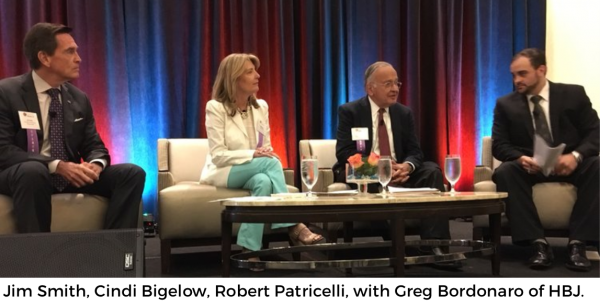
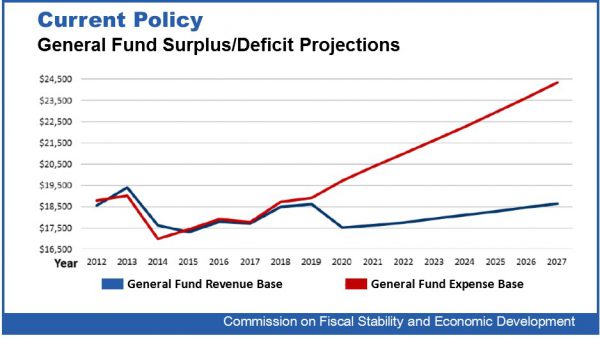 Smith and Robert Patricelli, former CEO & Founder of Women's Health USA, who co-chaired the panel, were featured along with Commission member Cindi Bigelow, CEO of Bigelow Tea, at an event coordinated by the Hartford Business Journal last week. It was one of nearly 100 forums, discussions and one-on-one meetings that the co-chairs and other commission members have had since their findings and recommendations were issued.
Smith and Robert Patricelli, former CEO & Founder of Women's Health USA, who co-chaired the panel, were featured along with Commission member Cindi Bigelow, CEO of Bigelow Tea, at an event coordinated by the Hartford Business Journal last week. It was one of nearly 100 forums, discussions and one-on-one meetings that the co-chairs and other commission members have had since their findings and recommendations were issued.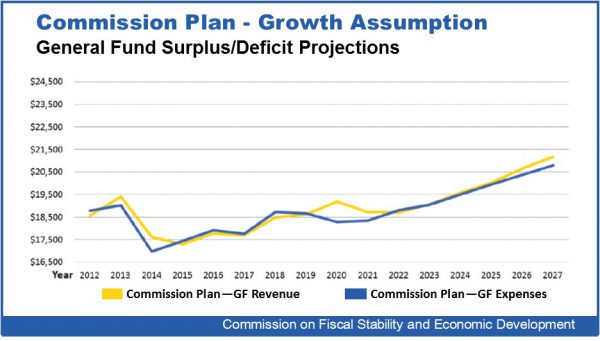
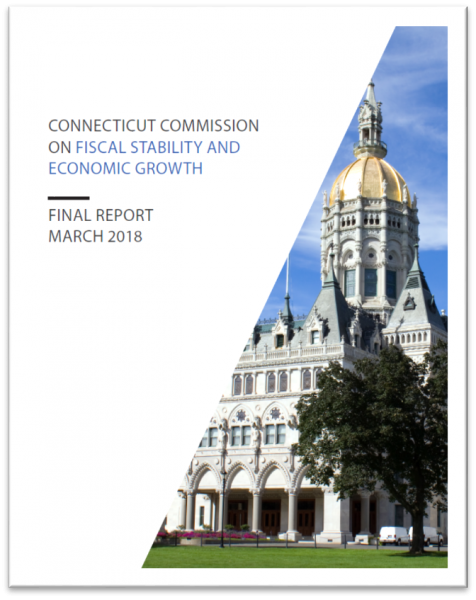 The co-chairs say it is understandable that more was not done with the Commission’s recommendations during the short 2018 legislative session, largely because an election was just around the corner. Instead, the legislature opted to have the Office of Policy and Management (OPM) coordinate two studies, soon to get underway. One would look at the Commission’s recommendations that involve “rebalancing of state taxes to better stimulate economic growth without raising net new taxes”; the other would conduct a study of the proposal for reform of the Teachers' Retirement System.
The co-chairs say it is understandable that more was not done with the Commission’s recommendations during the short 2018 legislative session, largely because an election was just around the corner. Instead, the legislature opted to have the Office of Policy and Management (OPM) coordinate two studies, soon to get underway. One would look at the Commission’s recommendations that involve “rebalancing of state taxes to better stimulate economic growth without raising net new taxes”; the other would conduct a study of the proposal for reform of the Teachers' Retirement System. Katherine Houlihan was elected as president. She is a partner in Insurance Provider Group, a Wethersfield insurance brokerage serving clients in manufacturing and other industries, serving as Chief Talent Officer.
Katherine Houlihan was elected as president. She is a partner in Insurance Provider Group, a Wethersfield insurance brokerage serving clients in manufacturing and other industries, serving as Chief Talent Officer. The election is yet another milestone for Mayer in just the past six months. The great granddaughter of Bead Industries, Inc. founder, W. Calvin Bryant, she was promoted to CEO of the family-owned company at the start of this year. In addition to her duties as CEO and as an officer on the NHMA Board, she is a board member of the University of New Haven’s Entrepreneurship and Innovation Program.
The election is yet another milestone for Mayer in just the past six months. The great granddaughter of Bead Industries, Inc. founder, W. Calvin Bryant, she was promoted to CEO of the family-owned company at the start of this year. In addition to her duties as CEO and as an officer on the NHMA Board, she is a board member of the University of New Haven’s Entrepreneurship and Innovation Program.



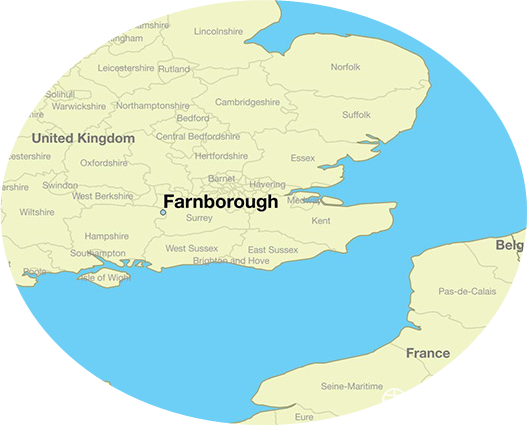 Satisfied Connecticut companies in 2016 include Windsor-based
Satisfied Connecticut companies in 2016 include Windsor-based 
 More than a dozen Connecticut companies had a presence in the state’s pavilion at the event: Jackson Laboratory, Sema4, Genotech Matrix, AlvaHealth, RallyBio, Cantor Colburn, Pfizer, e-Path Learning, Thetis Pharmaceuticals, XViVO, Clarity Quest, Lucerna, Wyant Simboli, Boehringer Ingelheim, Aeromics, LambdaVision, Pattern Genomics.
More than a dozen Connecticut companies had a presence in the state’s pavilion at the event: Jackson Laboratory, Sema4, Genotech Matrix, AlvaHealth, RallyBio, Cantor Colburn, Pfizer, e-Path Learning, Thetis Pharmaceuticals, XViVO, Clarity Quest, Lucerna, Wyant Simboli, Boehringer Ingelheim, Aeromics, LambdaVision, Pattern Genomics.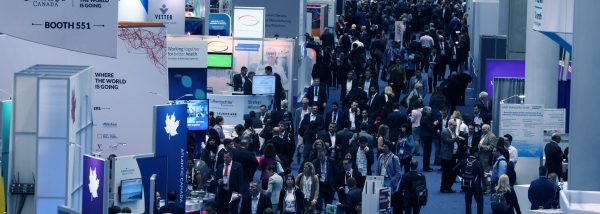 All told, there were more than 1,000 companies from dozens of nations represented at the 25th anniversary conference. The organizations
All told, there were more than 1,000 companies from dozens of nations represented at the 25th anniversary conference. The organizations 
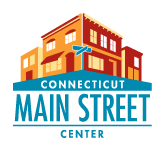
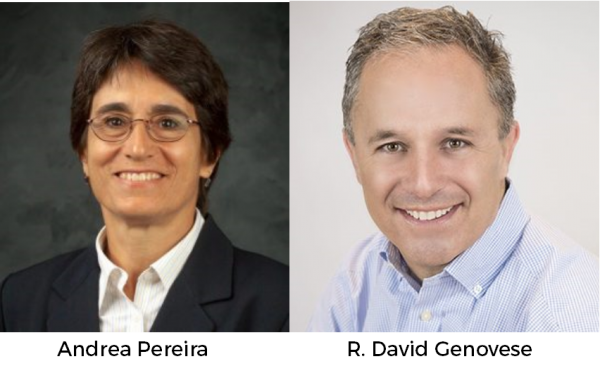 The Jack Shannahan Award for Public Service for 2018 goes to Andrea Pereira, a former Board Chair of Connecticut Main Street Center, who has been a partner in CMSC’s Come Home to Downtown program, providing financing through the Come Home to Downtown Loan Fund. Pereira, Executive Director of
The Jack Shannahan Award for Public Service for 2018 goes to Andrea Pereira, a former Board Chair of Connecticut Main Street Center, who has been a partner in CMSC’s Come Home to Downtown program, providing financing through the Come Home to Downtown Loan Fund. Pereira, Executive Director of 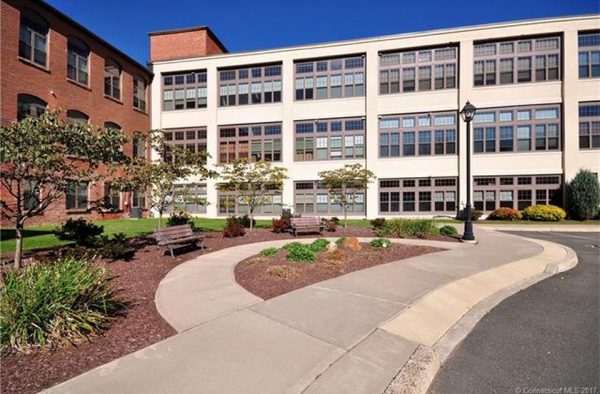


 state with a lower rate was Massachusetts.
state with a lower rate was Massachusetts. 

 Once every 19 minutes, a senior citizen in America dies as a result of injuries sustained during a fall. The older Americans became, the greater their risk of dying from a fall. In 2016, there were 15.6 fatal falls for every 100,000 Americans between the ages of 65 and 74. Among adults ages 75 to 84, there were 61.4 such deaths per 100,000 people. And for those ages 85 and up, there were 247.9 fatal falls per 100,000 people.
Once every 19 minutes, a senior citizen in America dies as a result of injuries sustained during a fall. The older Americans became, the greater their risk of dying from a fall. In 2016, there were 15.6 fatal falls for every 100,000 Americans between the ages of 65 and 74. Among adults ages 75 to 84, there were 61.4 such deaths per 100,000 people. And for those ages 85 and up, there were 247.9 fatal falls per 100,000 people.









